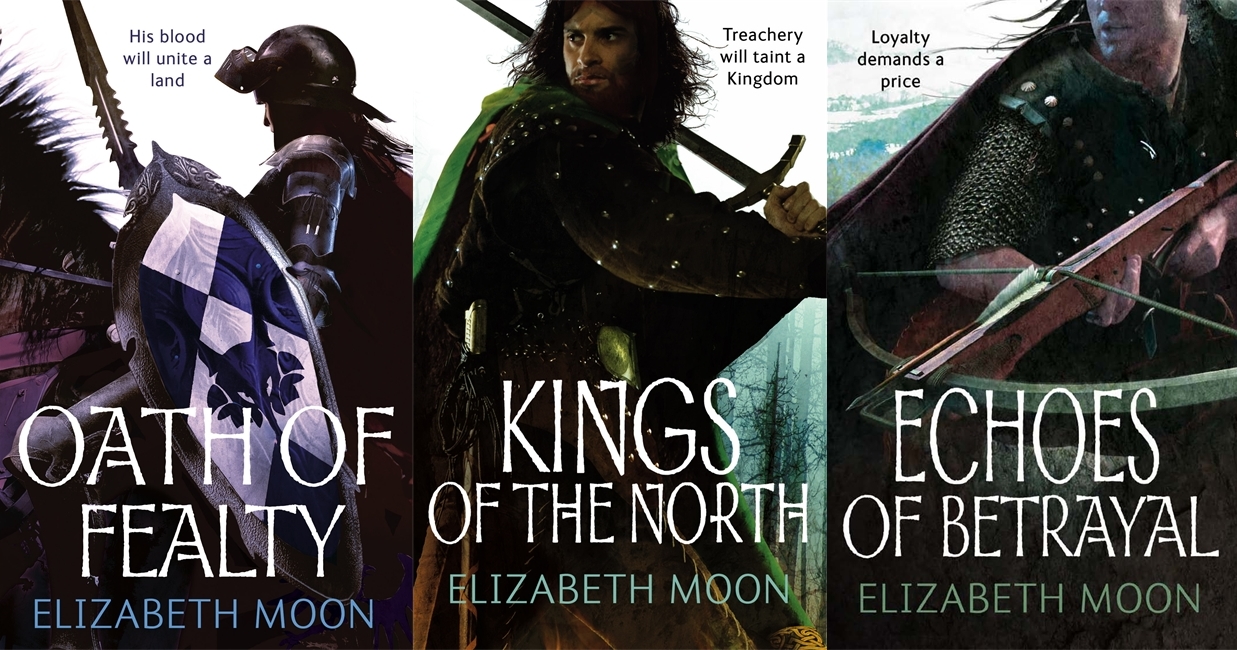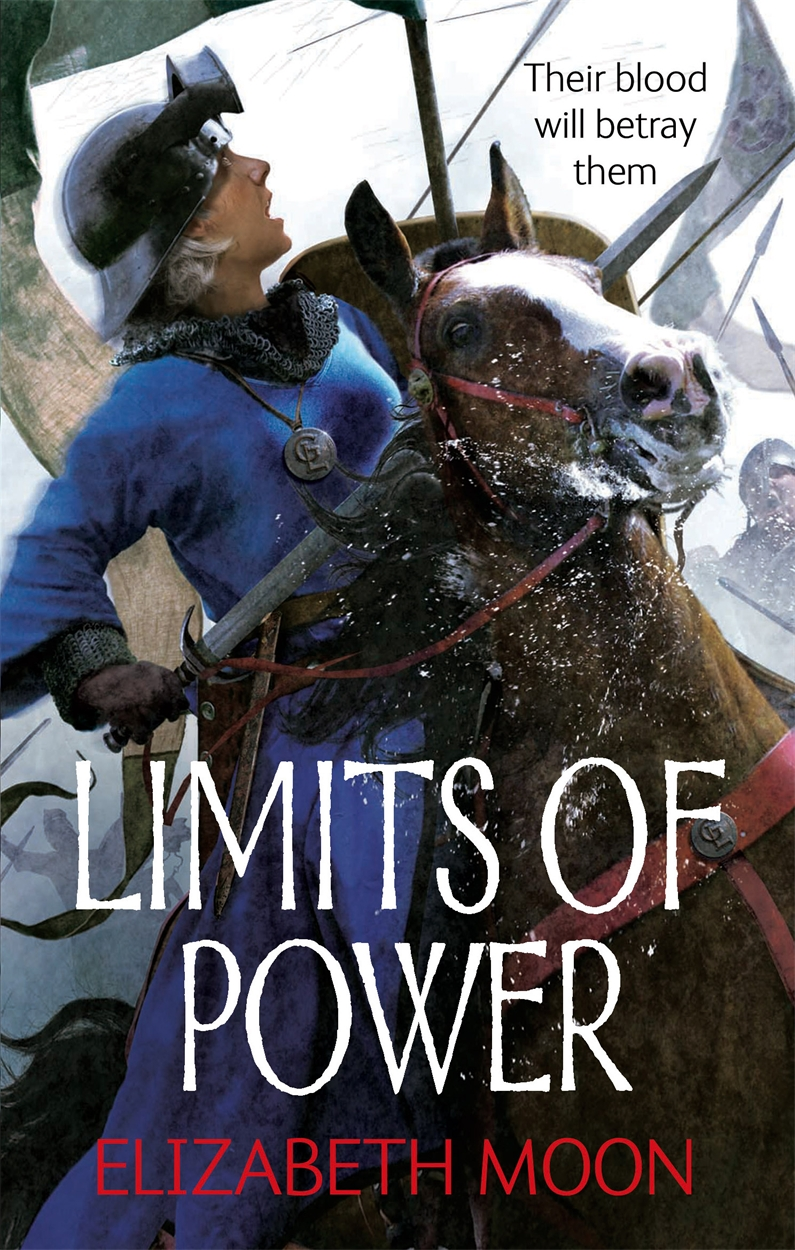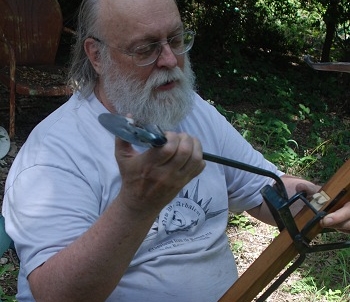Elizabeth Moon publishes LIMITS OF POWER (UK | ANZ), the penultimate volume in her epic fantasy series Paladin’s Legacy, today. As an author who’s returned to the classic fantasy world she first created in the Paksenarrion series again and again, we asked her how she keeps the details about this world realistic, and consistent . . .
My first visit to New World Arbalest wasn’t a quest for crossbow knowledge, but a chance to see a period (real, not modern make) rapier . . . to hold and flourish a sword that had been used, several hundred years ago, either to mark someone’s rank or kill someone’s foe. I had met “Master Iolo” (David Watson) and his wife Kathleen – both fencing instructors – at a convention. But in that first visit I saw the shop at the back of the house, full of wood, sawdust, shavings, antlers, arrays of tools, and crossbows in every stage of construction. I knew very little about crossbows then, except that I wanted to learn more.
Writers are often research junkies. We need to find out about all sorts of things in order to write stories that go beyond our own personal experience. Whether it’s a thriller or a mystery or a contemporary slice of life story – or epic fantasy – there’s always something we need to learn. So we haunt libraries, have overstuffed bookshelves in our own homes (or, now, overstuffed e-readers, or both), spend hours hunting down facts (we hope) on the internet. When we meet someone with first-hand knowledge of something we know we’ll need for later books, that poor soul hasn’t a chance. A writer in full research mode is like a hungry vampire: we will get what we want . . .

Finished crossbows of various designs on the west wall of the shop. Short, long, straight, rounded, with maple, oak or cherry stocks.
By the time I returned to Paksworld, the story-universe of my first books, David was my front-line expert for archery – both handbow and crossbow. I knew by then that he had traveled to museums in the UK and Europe to study the original designs, that he’d made crossbows for museums and movies, that he had clientele around the world.
Any writer would be lucky to have such a resource only an hour away, since central Texas is not full of great historical armories. I’ve spent time in the shop watching him work and learning more about crossbows than I will ever use in the story itself. Which crossbow designs (straight, curvaceous, thick, thin) and handbow designs (selfbows like the English longbow, horn/sinew composites like the Turkish bows) were used in which parts of the world and why. The difference in maintenance needs of selfbows, composite handbows, and the different types of crossbows (steel prods vs. wooden prods vs. horn-and-sinew composite prods.) What bowstrings were made of in different parts of Europe and the Near East at different periods. What can go wrong in real-world situations (for one thing, the roller nut of a crossbow – often made of antler or bone – will swell up in wet weather and jam. A yew longbow doesn’t have that problem.)
Books – and I have access to his extensive library – are no substitute for shooting the bows, handling the tools used to make the bows, watching the process of tying in the prod to the stock, trying to make a bowstring (mine did not pass muster), watching him turn a roller nut from a section of antler, etc. The smell of cow horn “cooking” to soften it so it can be flattened out and applied to the bow as inlay is . . . unforgettable. Indescribable, too. For the Paladin’s Legacy series, David helped me come up with historically-based crossbow and longbow designs suitable for each culture and each use within that culture, from light hunting bows for peasants poaching rabbits (“pushpin” bows) to sailors protecting their ship from harbor thieves. From military bows (for light cavalry, heavy cavalry, infantry, snipers) to bows for outlaws (pirates on the sea, brigands on land) and hunting bows for wealthier patrons.
When it came to Stammel’s exploits as the Blind Archer, I asked David if it was feasible. That discussion went technical in a hurry, but some experiments (not endangering friends used as aiming guides, however: only soft things were propelled) proved it was. David has been alpha reader for all the archery sequences. Having someone to call when you need to know how many bolts an average soldier would carry for his/her crossbow, or how they would be stored in the supply train (a barrel with 600 or a box with 250, according to a Swedish source), keeps the writer from the equivalent of the “endless ammo revolver” problem in bad western movies.
Once the writer has absorbed all this, then it’s necessary to leave most of it out of the book, using only those parts that the story itself needs. That’s tough sometimes. The urge to over-share is strong in many of us.
~Elizabeth Moon

Paladin’s Legacy Books 1-3
The post “Weapons, Weapons, Weapons!” Elizabeth Moon on Research for Epic Fantasy appeared first on Orbit Books.

